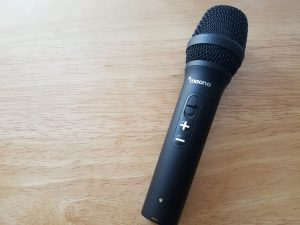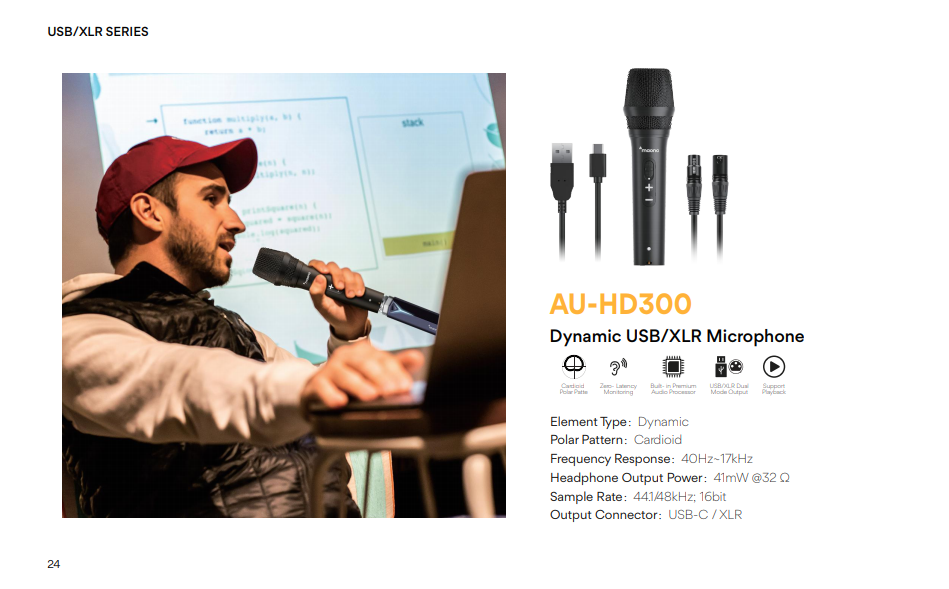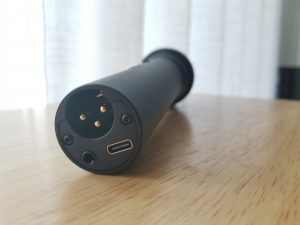
Maono AU-HD300T Dynamic Hybrid USB/XLR Microphone Review
Coming to you from a company that I feel is genuinely trying to push the boundaries when it comes to affordable yet high quality gear – the Maono AU-HD300T Dynamic Hybrid USB/XLR Microphone. In this article, I’ll be giving you my own review of this unique piece of gear.
At first glance, it appears to be a standard hand-held dynamic mic, but after closer inspection, you might notice that this mic brings something pretty special to the home-recording game.
Overview
For those of us without recording interfaces, this mic saves the day -as is the case with any standard USB microphone. You simply plug it into your computer.
However, the Maono AU-HD300T offers not only a USB connector, but also has an output for XLR. What’s more is that you can simultaneously record via USB and XLR. This opens the door to some unique and unexpected possibilities.
On top of the “Dual Mode,” USB/XLR functionality of this mic, it also offers real-time monitoring via a simple headphone jack. It also features an on/off switch, and volume control via +/- buttons on the microphone’s side.
One more super-perk to this microphone (especially given the price) is the stand, shock mount, USB-C & XLR cables, and pop-filter it comes with. It’s basically the perfect investment for new podcasters trying to avoid breaking their bank.
I’m not going to say that this mic is the best quality on the market, as it’s comparable to microphones three-times its price. But I will say that this microphone is likely the best quality you will find at this price point.
How it Sounds
 The sound quality of the Maono AU-HD300T is very good overall. The frequency response is pretty flat, and you can actually find that information printed in the booklet from the box. I find that level of transparency to be pretty cool, especially when it comes to less expensive microphones.
The sound quality of the Maono AU-HD300T is very good overall. The frequency response is pretty flat, and you can actually find that information printed in the booklet from the box. I find that level of transparency to be pretty cool, especially when it comes to less expensive microphones.
The Maono AU-HD300T has a frequency range of 40Hz to 17kHz with a high pass filter on the low end, helping to reduce some darker background noise. This frequency range is a little broader than a typical dynamic microphone around this price range, which gives it some extra clarity and presence.
One thing many directional mics have in common is their susceptibility to picking up plosive noise in vocal recordings. The cardioid polar pattern allows the microphone to pick-up noise from the front, and reject noise from the sides and rear. This helps to eliminate extra room noise, but emphasizes the front more keenly and this often results in plosive disruptions in voice recordings.
It seems that Maono knew that this mic would sound 10x better with a pop-filter, so they threw one in the box for you. So make sure you filter up before you do too much vocal recording with this.
Going back to the very-cool dual-compatibility thing for a moment. This gives people the ability to record using this microphone plugged directly into their computer via a USB port (if you’re unable to use an audio interface with XLR compatibility). However, the quality of the audio seems to be lacking a bit on the USB side of things. It lacks a certain amount of high-end clarity that the XLR output is able to produce when compared side-by-side.
In my opinion, (and maybe my ears aren’t as great as others) the difference is noticeable but only on a completely dry recording. There’s usually the option to spruce a recording up with filters on the back-end of a recording session, but at the same time, the better the front end, the better the end product. Luckily, this is just a comparison of two different outputs on the same mic!
Applications
The Maono AU-HD300T has some great features, and sounds like a microphone you might spend 2-3x the amount of money on. It was designed to be a desktop microphone for podcasting, but I would go further and say that it’s good for all speech-based applications from Podcasting and YouTubing to live public speaking. It’s a natural sounding microphone, and handles the voice really well.
Final Thoughts
The Maono AU-HD300T microphone seems to bring a whole lot of bang for your buck. It is a less expensive dynamic microphone, so that comes with some expected lack in quality. You might find that it sounds a little dull, but for the price, you will be pressed to find something better. Like I said earlier, it has a broad frequency response, so your recordings will sound more natural than bright, booming and polished.
This isn’t necessarily a bad thing though, especially if you have some computer software with which you can add some filtering. All in all, I would absolutely recommend considering this microphone to anyone wanting to get started with their own podcast, or even a home-studio on a budget.


